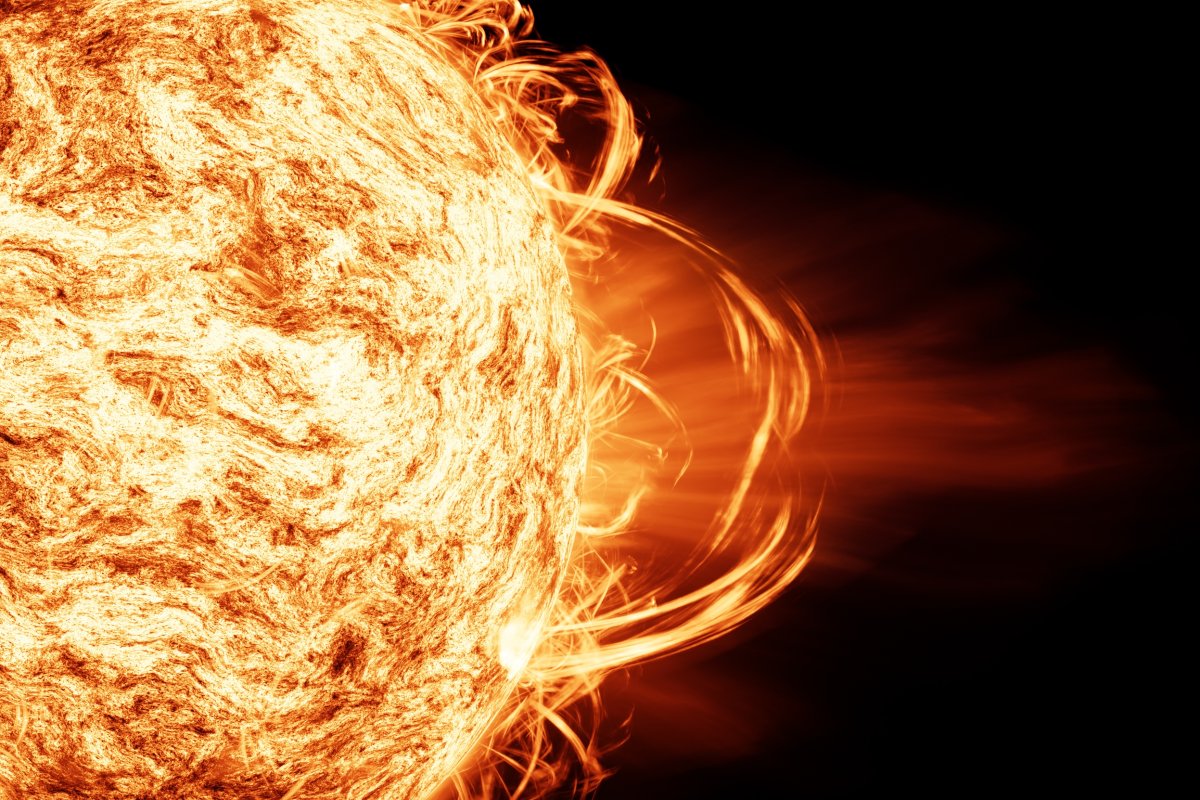There is a chance of powerful X-class solar flares that are capable of causing radio blackouts over the next three days, according to forecasters.
The National Oceanic and Atmospheric Administration (NOAA) Space Weather Prediction Center issued a forecast at 7:30 p.m. EST on Tuesday, indicating there is a 25-percent chance of X-class flares and a 65 percent chance of M-class flares, from now until November 15.
These flares can trigger widespread radio blackouts, with X-class flares capable of affecting satellites, communication systems and even some ground-based technologies, if directed toward Earth. M-class flares may trigger brief radio blackouts, affecting the polar regions and minor radiation storms.
Solar flares are giant explosions that occur in a localized region of the sun's atmosphere, when energy in "twisted" magnetic fields is released.
These events, which typically originate from sunspots—darker, planet-sized regions on the solar surface—spew out electromagnetic radiation, such as X-rays, visible light and ultraviolet light, as well as high-speed particles into space.
Solar flares can be classified according to their intensity. X-class flares are the most powerful and least common, while the weakest are categorized as A-class. In between these categories are the B-, C- and M- classes in order of increasing strength.

Each class represents flares that are at least 10 times more powerful than the previous one. For example, an X-class flare is 10 times stronger than an M-class event, and 100 times more powerful than a C-class flare.
C-class flares and below are generally too weak to produce any noticeable space weather effects on Earth.
The Space Weather Prediction Center (SPWC) forecast indicates that minor-moderate radio blackouts are likely over the period November 13-15. There is also a 25 percent chance of R3, or strong, radio blackouts occurring.
Sunspots have complex magnetic fields that can become twisted and unstable over time. When the magnetic energy in a sunspot area suddenly releases, it generates a solar flare.
According to SpaceWeather.com, sunspot AR3889 has an "unstable" magnetic field that currently poses a threat for "significant" explosions.
This sunspot is part of a cluster in the sun's Southern Hemisphere that produced a number of M-class solar flares and an X-class event earlier this month. These flares sparked radio blackouts across the world.
The frequency and intensity of solar flares tends to increase around the height of the solar cycle. The sun's activity is defined by this roughly 11-year-long cycle, which is marked by periods of high and low activity known as solar maximums and minimums.
As the sun nears a solar maximum, the number of sunspots increases and the effects of space weather on the near-Earth environment tend to be greater.
Scientists have recorded 24 complete solar cycles since 1755. We are currently in Solar Cycle 25, which began in 2019. NASA and the NOAA announced in October this year that this cycle had reached its solar maximum period.
"At solar minimum there are very few sunspots, sometimes none at all for days on end," Rachel Howe, a researcher from the University of Birmingham in the United Kingdom who studies the sun, previously told Newsweek.
"When the spots for a new cycle start to appear they are at higher latitudes (about 30 degrees from the equator) and over time they become more common and appear closer and closer to the equator."
"At solar maximum there are many sunspots over a wide range of latitudes, and phenomena such as flares—where the sun throws out bursts of radiation—and coronal mass ejections where it throws part of its outer atmosphere into space—are more common," she said.
Do you have a tip on a science story that Newsweek should be covering? Do you have a question about space weather? Let us know via science@newsweek.com.

















:quality(85):upscale()/2024/04/24/878/n/3019466/36c5693c662965c5d1ce91.72473705_.jpg)


 English (US) ·
English (US) ·